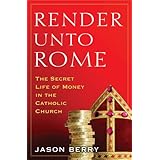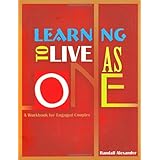The U.S. Supreme Court made it easier for investors to press securities fraud suits, ruling for shareholders who accuse Halliburton Co. (HAL) of misrepresenting its financial condition while under Dick Cheney’s leadership.
The justices yesterday unanimously said the shareholders can sue as a group without first establishing that they lost money as a result of the alleged fraud.
The shareholders, led by the Erica P. John Fund, contend that Halliburton from 1999 to 2001 falsified earnings reports, played down estimated asbestos liability and overstated the benefits of a merger. Cheney, later the U.S. vice president, served as chairman and chief executive officer of the oilfield services provider during part of the disputed period.
The high court case concerned the standard that applies at the so-called class certification stage, not at final judgment. The Supreme Court previously said that, to get class-action status, shareholders must show they made investment decisions in reliance on a company’s alleged misstatements. Shareholders can meet that test by showing the company perpetrated a so-called fraud on the market.
Chief Justice John Roberts yesterday said that requirement doesn’t mean that investors seeking class-action status must show that they lost money as a result of the alleged fraud.
Teresa Wong, a spokeswoman for Halliburton, didn’t immediately respond to an e-mail seeking comment.
The case is Erica P. John Fund v. Halliburton, 09-1403.
Barnier Calls European Finance Ministry Proposal ‘A Good Idea’
Michel Barnier, the European Union’s financial services commissioner, said a proposal to create a European finance ministry to help solve the euro region’s fiscal problems is a “good idea.”
“I think it’s a good idea” in theory, Barnier said after giving a speech in Montreal yesterday. He said the EU has already taken a similar step by creating a single foreign policy chief. There are possible ways “to do the same for finance,” he said.
European Central Bank President Jean-Claude Trichet said on June 2 that governments should consider setting up a finance ministry for the 17-nation euro region as the bloc struggles to contain a region-wide sovereign-debt crisis.
World Bank Eyes Network of CO2 Markets in Make-or-Break Decade
Emerging nations are growing increasingly interested in using market-based mechanisms to fight climate change and may become the “incubator” for a network of new emissions-trading programs, according to the World Bank.
As many as 20 countries worldwide are considering the introduction of programs that would reduce greenhouse gases and create tradable pollution permits, said Andrew Steer, World Bank special envoy for climate change. The bank last week approved the first grants to developing nations to help them analyze and design emissions plans that could boost the $142 billion global carbon market after it shrank for the first time in 2010.
The global value of the market for greenhouse-gas permits and credits for cutting pollution fell to $142 billion last year from $144 billion in 2009, snapping five years of growth amid a lack of clarity about the future climate framework, a World Bank report showed last week.
The idea of a carbon market “is catching on,” Steer said in an interview on June 2 during the Carbon Expo conference in Barcelona, Spain. China is introducing a cap-and-trade system over the next two years and the World Bank is providing support to Chile, Colombia, Costa Rica, Mexico, Indonesia, Thailand and Turkey as they work toward “market-based instruments” that help cut greenhouse gases, Steer said.
For more, click here.
Hypo Noe Says Charged 58 Million Euros by Austrian Watchdog FMA
Austria’s banking watchdog FMA yesterday ordered Hypo Noe Gruppe Bank AG to pay a 58 million-euro ($85 million) fine over an alleged breach of banking rules, according to a statement by Hypo Noe.
The order claims Hypo Noe breached limits on how much money it can lend to single customers with an 800 million-euro investment in an affiliate, the bank said in the statement.
It added that it disagrees with the FMA and will challenge the order in Austria’s highest court.
Ex-Credit Suisse Employees Face Trial in Korea, Times Says
Two former employees of Credit Suisse Group AG (CSGN)’s Hong Kong branch face trial in South Korea on charges of unfair profiteering from stock price manipulation, the Korea Times reported yesterday.
The pair were charged with investing in struggling firms between 2005 and 2006 to boost their stock prices and selling borrowed shares from the companies at higher prices, the newspaper said, citing the Seoul Central District Prosecutors’ Office.
Three phone calls to the prosecutors’ office were unanswered yesterday, a Korean national holiday. Uni Park, a spokeswoman for Credit Suisse in Seoul, declined to comment.
Ex-IMF Chief Strauss-Kahn Pleads Not Guilty to Sex Assault
Former International Monetary Fund Managing Director Dominique Strauss-Kahn pleaded not guilty three weeks after his arrest to charges of sexually assaulting and attempting to rape a Manhattan hotel maid.
After the hearing before New York State Supreme Court Justice Michael Obus, Strauss-Kahn left the courthouse with his wife, Anne Sinclair, as hotel workers shouted, “Shame on you.”
Strauss-Kahn, 62, was arrested May 14 and later indicted on seven counts that included attempted rape, sexual abuse and unlawful imprisonment. If convicted of the top charges, he faces as long as 25 years in prison. He allegedly attacked a housekeeper, a 32-year-old from Guinea, at the Midtown Manhattan Sofitel on May 14.
“There was no element of forcible compulsion in this case whatsoever,” Brafman told reporters outside the courthouse after the arraignment. Obus scheduled the next hearing for July 18.
The case is People v. Strauss-Kahn, 2526/11, Supreme Court of the State of New York, New York County (Manhattan).
For more of this story, click here.
Geithner Urges Rules on Swaps to Avoid ‘Race to the Bottom’
U.S. Treasury Secretary Timothy F. Geithner said he wants global minimum standards on derivatives trading and urged regulators to avoid a “race to the bottom” in which financial risk moves to the least-supervised economies.
“We need global minimum standards for margins on uncleared derivatives trades,” Geithner said yesterday in remarks prepared for a speech in Atlanta. “Without international consensus, the broader cause of central clearing will be undermined. Risk in derivatives will become concentrated in those jurisdictions with the least oversight. This is a recipe for another crisis.”
The U.S. Commodity Futures Trading Commission and Securities and Exchange Commission are writing new regulations required by the Dodd-Frank Act, which seeks to reduce risk and boost transparency in the $601 trillion global swaps market.
“As we act to contain risk in the U.S., we want to minimize the chances that it simply moves to other markets around the world,” Geithner said in his remarks at the International Monetary Conference. He pointed to the United Kingdom’s “experiment in a strategy of ‘light touch’ regulation” to attract business to London as a “cautionary note for other countries.”
Bafin’s Sanio, Bank of France’s Noyer Comment On Stress Tests
Germany’s top financial regulator lashed out at the European Union’s bank stress tests, saying the standards adopted by the agency carrying them out lack “legitimacy.”
The European Banking Authority used a definition of capital that deviates from global rules “with consequences no-one can gauge,” Bafin Chairman Jochen Sanio, 64, said in the introduction to the German regulator’s annual report yesterday. The EBA lacks “clear, defined corporate-governance structures, which alone could guarantee process legitimacy,” he said.
“This gives cause for concern in the future,” said Sanio.
The publication of the stress-test results may be delayed until July, a European Banking Authority official said last week. They had been scheduled to be released this month.
An EBA spokeswoman didn’t immediately respond to a phone call seeking comment.
Separately, Bank of France Governor Christian Noyer said the key aim of European bank stress tests is to ensure governments don’t again become crippled by financial industry debts.
“Obviously there is a circular causality between government debt and the banking sector,” Noyer, who is also a member of the European Central Bank’s governing council, said yesterday at a conference organized by the Bank of Finland in Helsinki. “In this context, the main purpose of stress testing is to break that circularity.”
Noyer yesterday reiterated the ECB’s resistance to any model “akin to” debt restructuring as Greece, Ireland and Portugal try to force through austerity measures and avoid default.
For more about the report, click here.
For more about Noyer’s remarks, click here.
Barclays Made $12.6 Billion Loan to Retain Staff, Bank Says
Barclays Plc (BARC), Britain’s third-largest bank, said it loaned former employees $12.6 billion to help set up Protium Finance LP to stop them from quitting.
“Barclays could not offer the management team -- at that time Barclays employees -- an attractive long-term career path,” Finance Director Chris Lucas said in a letter to the U.S. Securities and Exchange Commission on Jan. 31. “There was, therefore, a very significant risk that the team would leave, with the result that Barclays would no longer have the expertise necessary to manage these asset classes effectively.”
Barclays sold $12.3 billion of debt in 2009 to Protium, a fund run by Stephen King, former head of the bank’s principal mortgage-trading group, and Michael Keeley, who was a member of Barclays Capital’s management committee. The management team, initially consisting of 45 former Barclays employees, supplied $50 million of the financing.
At the time, Barclays said the move had nothing to do with “external pressure” from U.K. or U.S. regulators.
The Telegraph newspaper reported the story earlier.
To contact the reporter on this story: Carla Main in New Jersey at cmain2@bloomberg.net.
To contact the editor responsible for this report: Michael Hytha at mhytha@bloomberg.net.
Source : Click Here
Render Unto Rome: The Secret Life of Money in the Catholic Church (Hardcover)
By Jason Berry
Buy new: $15.67
18 used and new from $12.50
First tagged "finance" by Thomas Skugntl "Skug"
Customer tags: financial mismanagement, embezzlement, church corruption, embezzling, catholic church, hierarchical excess, finance, catholicism, abuse of power, investigative journalism, a church for the people, missing money 






 Wanna invest in a lawsuit against these guys? Image via Wikipedia
Wanna invest in a lawsuit against these guys? Image via Wikipedia Source :
Source : 
 Peru's Humala Urged To Quickly Name Prime Minister, FinanceMinister
Peru's Humala Urged To Quickly Name Prime Minister, FinanceMinister 